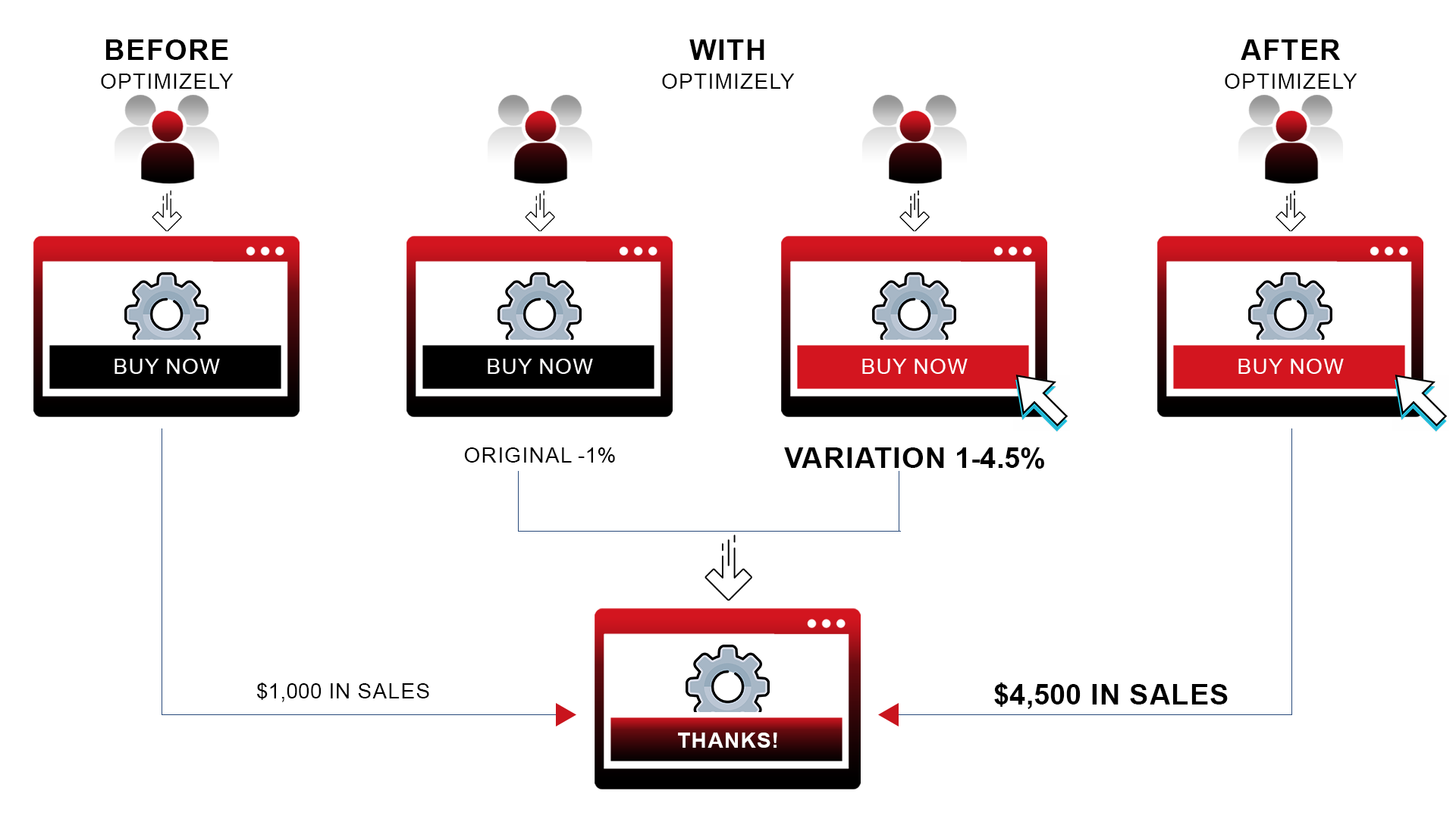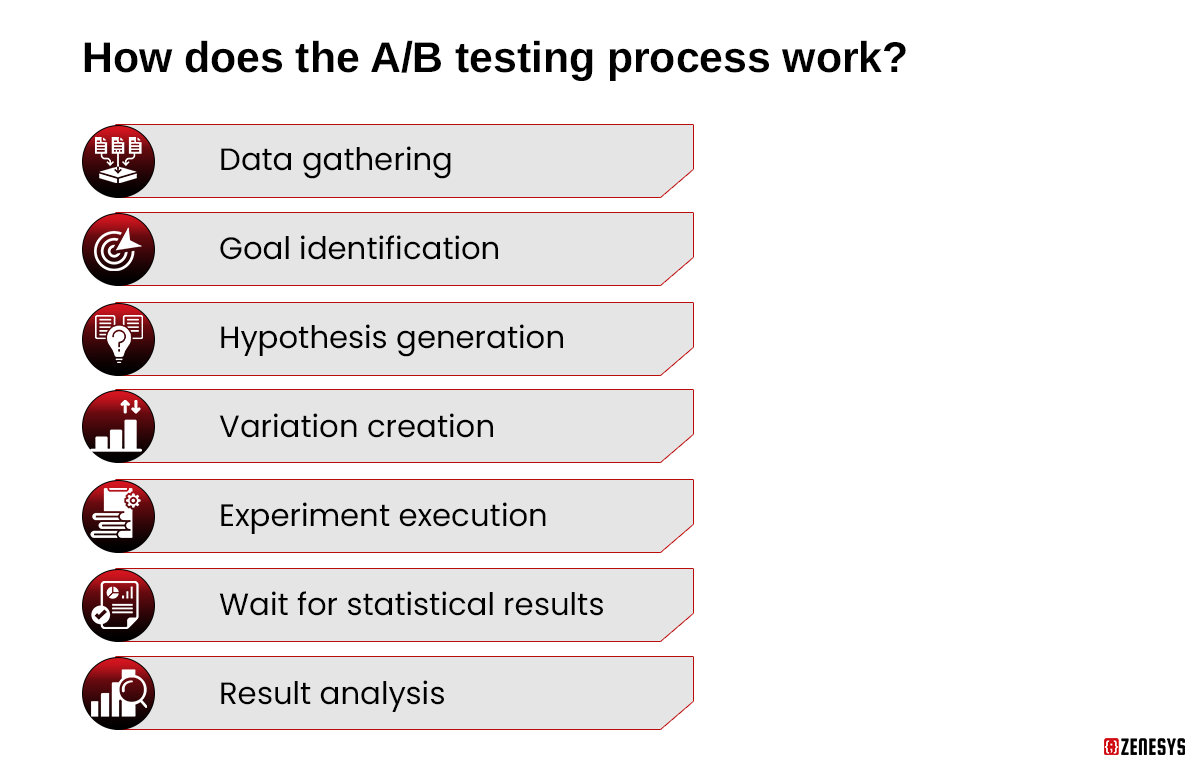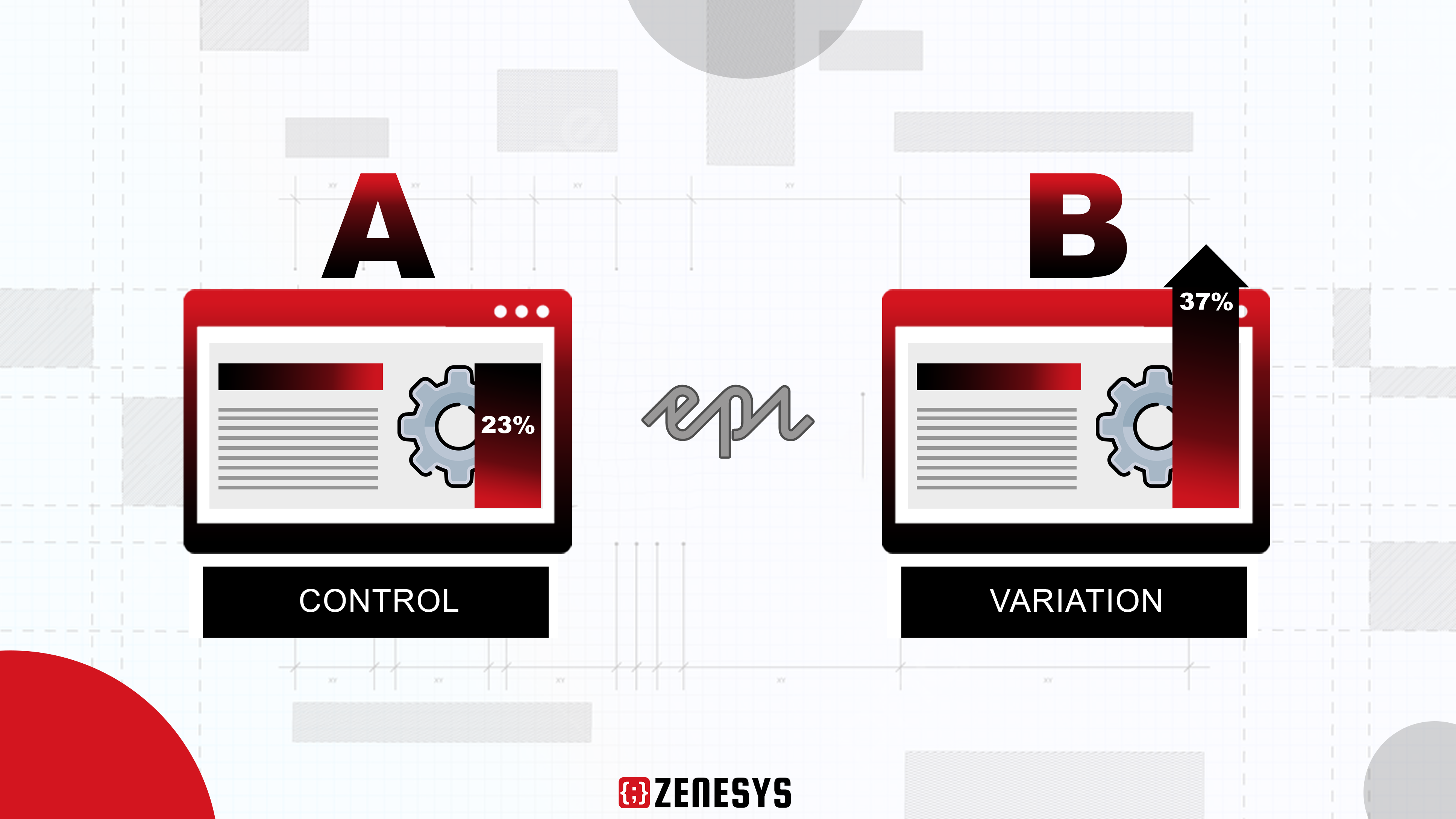Before buying any outfit, people try many outfits to check which outfit looks great on them.
Right?
Similarly, A/B testing in CMS development is a smart method to check what can be tempting to the users so that they can take the necessary action, whether it comes to email copy, landing page, call to action buttons (CTA), and more.
It's a way that just works beyond what we think is correct. It gives the statistical analysis that lets you know which variation performs better and helps you reach your conversion goals.
So, to choose between the assumptions and reality, A/B testing takes the front seat.
Now, you might be terribly thinking, how can I do A/B testing?
The answer is quite simple— An EPiServer Agency is your right destination.
But before jumping on the bandwagon, let's understand the ins and outs of A/B testing so that you can catch up with the right pick.
Well, what is A/B testing?
A/B testing is also popularly known as split testing— a marketing strategy where you segment your audience in a way that allows you to access the campaigns and determine which will perform better so that the company can find the best possible solutions and which needs to be implemented.

A question often arises about why a business should go for A/B testing. So, the answer is a valuable strategy as it recognizes that audiences have different buyer journeys, even though every company works in a unique way and may need personalized .NET CMS development solutions.
In this example, we have performed A/B testing by considering the four metrics, including conversion rate, bounce rate, click-through rate, and revenue per visitor, to understand which version will work better and more effectively for a company to make a particular action or persuade their users to purchase.
| Metric | Version A | Version B |
| Conversion rate | 5% | 6% |
| Bounce rate | 60% | 55% |
| Click-through rate | 10% | 12% |
| Revenue per visitor | $8 | $10 |
If you look at these metrics and compare them, it is clear that version B performs better than version A as it has— a higher click-through rate, conversion rate, and revenue per visitor, while version B has a lower bounce rate. Therefore, by comparing the different key performance indicators, version B will perform better than version A.
Moving forward, let’s delve deep to know the basic principle of how A/B testing works
How an effective A/B testing works?
In .NET CMS Development A/B testing, you take an app screen or a web page and make modifications so that you can curate a second version of the same app screen or web page. This change may or may not need to entirely revamp the whole webpage or app screen; a simple change may work, including a button, a single headline, etc.
Now that the traffic is bifurcated, half of your traffic is exposed to the original version (Version A) and half to the modified page version (version B).
As the visitors are shown to either version A or B based on that, each experience is precisely measured and gathered in a dashboard seamlessly, and the next step is to analyze the data with the help of a statical engine. This helps you identify whether variation B showed a neutral, positive, or negative effect in comparison with version A.
Why should businesses do an A/B test?
There is a magnitude of factors that suggest why businesses, individuals, and teams opt for A/B testing. Even most companies in their EPiServer development services consider A/B testing a significant factor.
It not only significantly enhances the user experience but also helps to collect actionable insights to create an impact. Moreover, it facilitates businesses as it becomes a reliable strategy that can challenge assumptions, empirically validate, and optimize user interactions.
There is no doubt that implementing A/B testing incredibly enhances user experiences and improves conversion rate optimization (CRO) in a gradual manner.
Let's understand it with the help of an example—a B2B company that wants to get qualified leads and enhance sales from their campaign landing pages. To achieve that goal, the CMS development team may leverage A/B testing by changing the subject line, CTA, overall page layout, and form fields for optimization. The results are improved conversions, reduced bounce, and better click-through rates.But sometimes, these changes at once seem to be the go-to implementation strategy that may influence visited behavior for a short time. But to achieve tangible results, the team would considerably analyze outcomes and cumulatively gather these insights to create effectively optimized long-term outcomes.
Real-time use cases of A/B testing
The adoption of A/B testing has increased over the years across diverse industries that want to optimize their digital experience and meet their specific objectives. Let's look at some of the real-time use cases across diverse industries.
| Company | Goals | Strategies to achieve goals |
|---|---|---|
| Media company | Increase leadership article sharing and more users to spend time on the site. |
|
| Travel Company | Enhance bookings and revenue |
|
| E-Commerce Company | Enhance customer experience sky rocket holiday sales boost average order value. |
|
| Technology Company | Make high-quality leads, persuade more intended buyers to enhance free trial sign-ups |
|
| Retail Company | Improve cross-selling capabilities, boost patient engagement, and shoot up average order frequency. |
|
| Healthcare company | Improved patient engagement, patient satisfaction, and better health outcomes. |
|
| Education Company | Increment in student enrollment, more student retention. |
|
How does the A/B testing process work?
Let's explore how the A/B testing process works so that you can run your test efficiently and .NET CMS Development execution effectively-

Data gathering
- By gathering the data, you can utilize powerful analytical tools like Google Analytics, which can help you spot your application's or website's high-traffic areas.
- It helps you analyze those spaces or areas with high bounce rates that need improvements.
- You can also explore other sources, including surveys, social media feedback, and heatmaps, to gain additional insights.
Goal identification
- It is one of the essential steps that gives you clarity. It helps you to understand what actions need to be done so that you can reach your goal in a quick time. Let's say, for conversion goals, the actions needed may be signing up for a newsletter, clicking the button, etc.
- These goals may be your driving force that helps the A/B testing metrics to ensure the success of the business.
Hypothesis generation
- In this step, you can generate an A/B testing idea along with a test hypothesis, which lets you know why the modified version is better than the existing version.
- Once you have a dedicated list of ideas, this is the time you can prioritize them in accordance with the expected impact and implementation difficulty.
Variation creation
- Utilize A/B testing software such as Optimizely Experiment to curate various versions of your app or website.
- You can incorporate some changes, including altering the buttons' colors, rearranging the page elements, the navigation element may be hidden, or fully customizing the whole aesthetics.
- If you are looking to make these changes seamlessly and successfully, our EPiServer development services may be happy to help you by using the visual editor and ensuring that the experiment creates different versions as expected.
Experiment execution
- Now is the time to begin the experiment and let your visitors participate. In this process, the visitors may be randomly assigned to either the existing or modified version.
- This interaction will help you to measure, count, and compare them to determine which variation performs best.
Wait for statistical results.
- This is a waiting period in which statistical experiment results will be achieved depending on how your target audience base is.
Result analysis
- Once the test results have been completed, now is the time to analyze the results.
- The A/B testing software will provide the data retrieved from the experiment and let you know the performance difference between the two versions along with statistically significant results so that you are confident enough to implement it further and make your CMS development journey seamless.
Conclusion: Optimize your application or site

With CMS development A/B testing, you can see the visible results and let you know which variation performs best by analyzing different key indicators, including click-through rate, bounce rate, conversion rate and more. So, utilizing A/B testing can help gather actionable insights that optimize user interactions. Would you like to make your A/B testing process worth implementing? Zenesys is a leading EPiServer Agency that helps businesses enhance website conversion rates and bring a steady flow of traffic and sales with an A/B testing process.
.png?lang=en-US&ext=.png)

.webp?lang=en-US&ext=.webp)

.webp?lang=en-US&ext=.webp)
